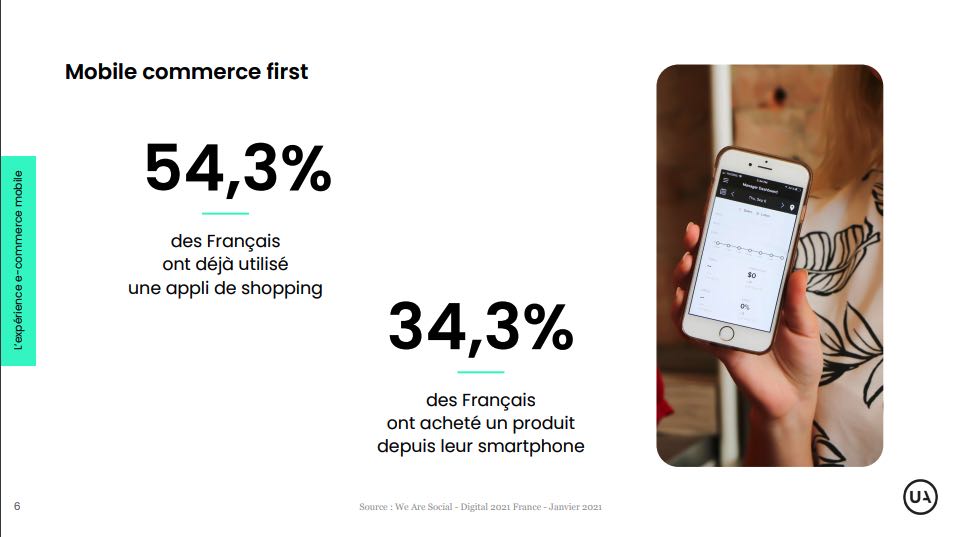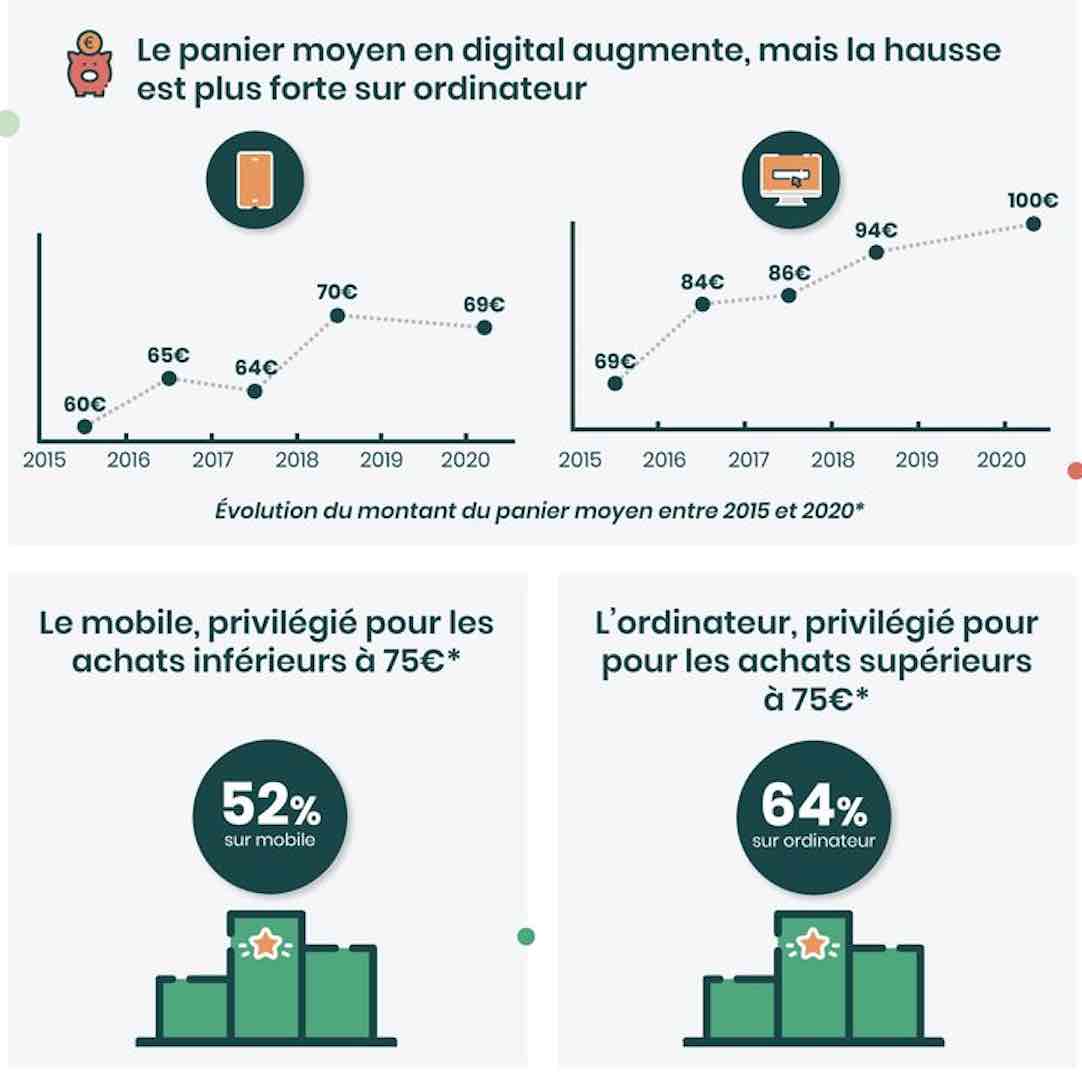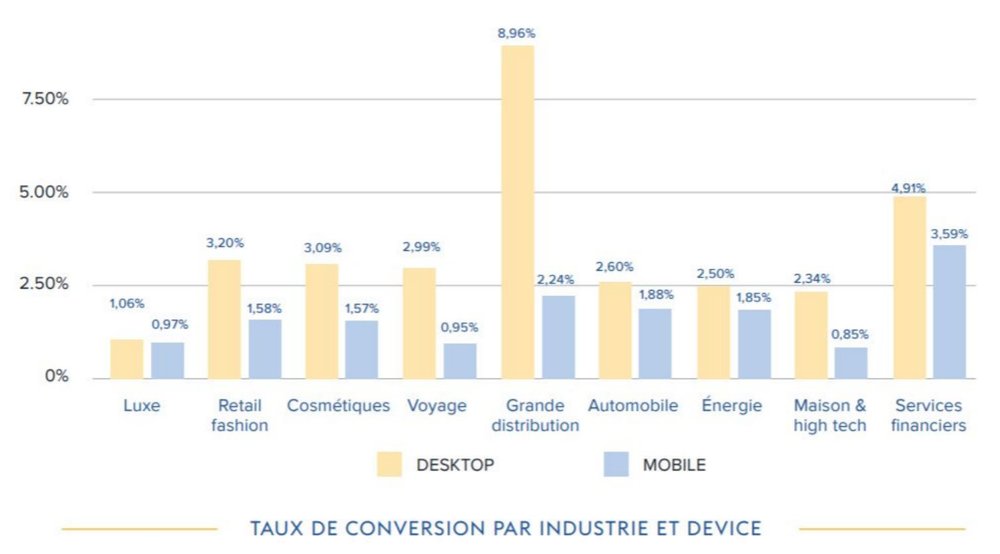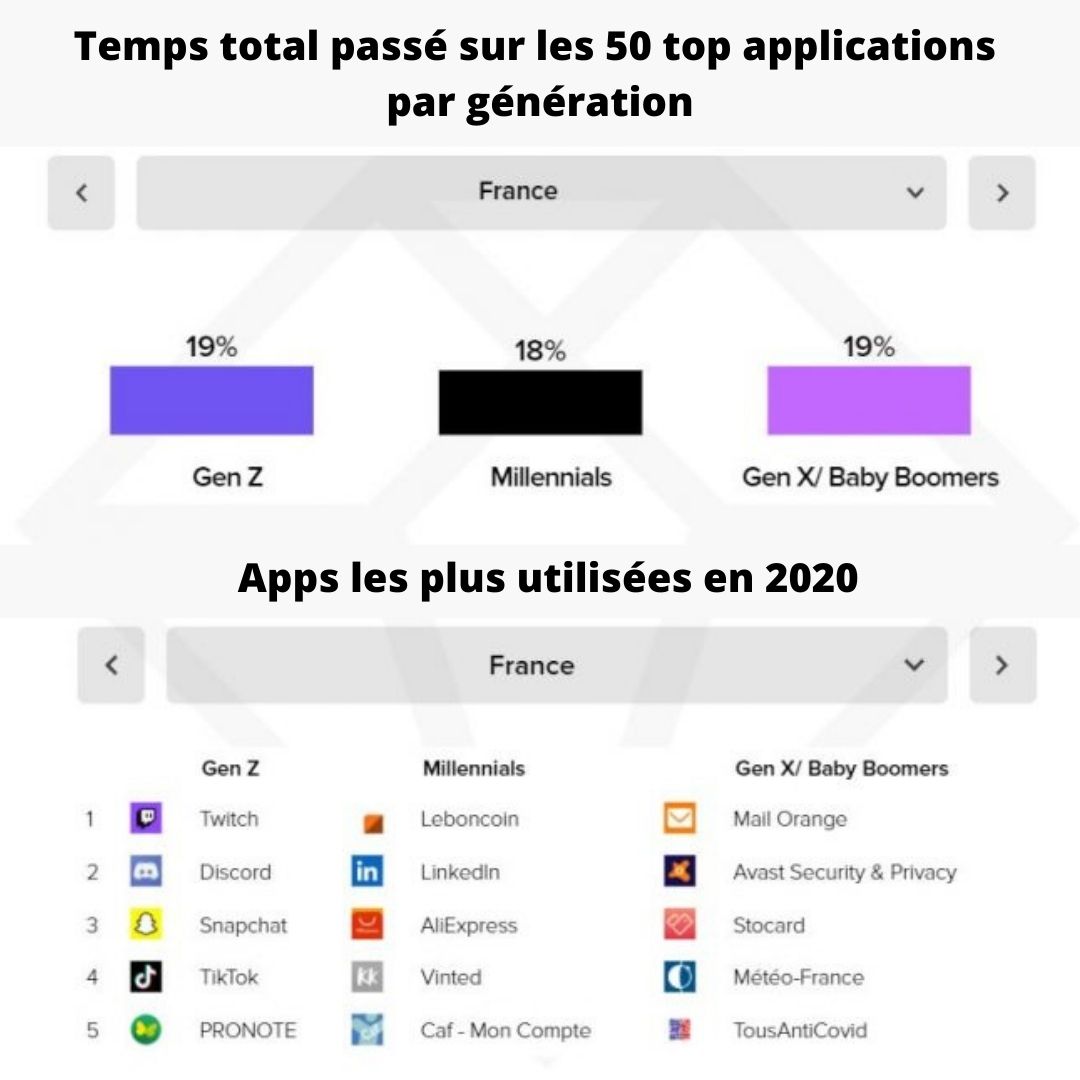
- Introduction
- Definition and advantages of M-commerce
- Difference between e-commerce and m-commerce
- Marketing issues and new practices
- M-commerce in France and around the world
- Shoppers and Average Basket on Mobile
- The most popular sectors online
- Spending on PC VS. Spending on mobile devices
- User profiles and connected devices
- M-commerce forecasts
Find the best deals at unbeatable prices!
Discover a selection of quality products at great prices. Simplify your shopping and save with us. 💰✨ #LessCostButBetter 🏆
It’s cheaper and better, so why pay high prices elsewhere? take advantage
To place an order on IvoireAchat, it’s better to create an account. However, this is not compulsory.
IvoireAchat is a reliable and trustworthy platform, as demonstrated by the 20 million users who visit it every month. You can order online without risk.
Introduction
It’s no longer news! M-commerce is now a heavyweight in online sales. With “m” for “mobile”, m-commerce refers to all e-commerce transactions carried out via mobile terminals (smartphones and tablets). The sector’s expansion is exceptional. It’s no longer just a question of booking train or plane tickets, or tickets for shows. Today, online ordering concerns all sectors, all walks of life, at any time of day.
Studies have been conducted for years to examine the marketing evolutions and purchasing reflexes of m-commerce. All e-commerce companies need to keep in mind the key figures on trends in e-commerce on phones and tablets, which are set to dethrone desktop e-commerce. What are the characteristics of m-commerce and how can you transform your customer experience dedicated to smartphones and tablets? We tell you all about it!
Definition and benefits of m-commerce
The difference between e-commerce and m-commerce
E-commerce defines all commercial transactions carried out on the web. M-commerce, on the other hand, encompasses only transactions carried out on phones or tablets, on websites or applications. M-commerce is therefore a sub-category of e-commerce.
The term m-commerce was coined around the year 2012, when wireless and connected technologies underwent a meteoric expansion. Also, the arrival of 3G in all territories intensified e-activities, including the online shopping experience via smartphones and tablets. Purchasing products and services on cell phones has become an important part of marketing practices. Thanks to technology, everything is made easier to speed up and simplify the purchasing process. Loyalty cards, online payment methods, contact details… All customer data is recorded on connected devices directly on the site, a far cry from the waiting line at the physical checkout.
Fevad figures in 2019
In France, Fevad has been pointing to the importance of m-commerce in the hexagon for many years. In 2019, a digital boom had already been analyzed by the federation. That year, no fewer than 3.1 million consumers took advantage of mobile commerce, representing an increase of 23.7% in one year. At the time, Fevad announced that mobile commerce was reaching 3 out of 10 Internet users, particularly the youngest (25/34 years) and women.
Before we look at the health of m-commerce sites in 2020, let’s take a look at what’s at stake and what e-tailers need to do to attract more and more customers to the mobile interface of their web stores. E-commerce success is within reach!
Marketing challenges and new practices: what do m-commerce consumers expect?
In France in 2020, 54.3% of French people had already used a shopping app and 34.3% had already placed an order for a product in euros via mobile, according to We Are Social (via Useradgents). For 28% of people who have activated shopping app notifications, push alerts encourage them to make a purchase on their website or app.

With these new uses come new demands from consumers. First of all, to win over buyers, you need a site design geared to a “mobile first” strategy: your store’s web pages must adapt to all screens, phones and tablets first and foremost.
Next, you need to make navigation as fluid as possible, and keep your site clean: not too much information, so as to put your products and services in the foreground. Also, avoid optional steps that will have a negative effect on your business and your profits in euros. It’s preferable not to require users to register in order to buy on your platform, at the risk of seeing the product added to their basket completely abandoned, or the customer turning to a more fluid web merchant on a smartphone.
Finally, digital security is of paramount importance not only for m-commerce, but also for any e-commerce strategy in general. Protecting data and giving consumers the power to choose their logins and the way they want to visit your site will be at the heart of your concerns.
Fast check-out, responsive design, your company’s support for multiple payment and delivery options, advantageous pricing in euros, enhanced branding and brand image… The customer experience is the main lever of m-commerce and the reason why it is attracting more and more users.
How does m-commerce work in France and around the world?
Share of mobile buyers
The year 2020 was marked by an unprecedented health crisis, bringing with it forced closures for retailers and unprecedented confinements. Against this backdrop, e-commerce sites have become the primary means of procurement in many markets.
App Annie, the global reference on the mobile applications market, unveils the figures that made 2020 the year of mobile transactions in its report “The State of Mobile 2021”. The troubled context has led to an explosion in the mobile applications market: in 12 months, growth has been as strong as in a period of 2 or 3 years.
The key figures put forward in the study are all up sharply: spending on store apps reached $143 billion, up 20% over one year. In terms of apps, 218 billion new applications were downloaded, an increase of 7% over the year.
In France, the figures are also rising: $2.06 billion was spent by French customers on apps, and 2.15 billion applications were downloaded. M-commerce in France has only just begun…
Average basket and frequency of mobile purchases
According to a study by Payplug, the average shopping basket has evolved. On smartphones and tablets, it has risen from €60 in 2015 to €69 in 2020. Also, Payplug reports that mobile is preferred for purchases at weekends rather than during the week. Although this practice is taking root and, according to the study, our use has matured as we use our mobiles all day long, this type of transaction is mainly chosen for purchases of less than €75.

The most popular sectors online
Contentsquare has released a study conducted over twelve months in ten different countries across 7 billion sessions on 400 sales portals. The report shows which sectors are the most popular on mobile: luxury goods, fashion and cosmetics are the fastest-growing industries.
These are followed by retail (57%), automotive (57%) and home/high-tech (56%). According to Contentsquare, online sales via cell phones account for 67.2%. However, the conversion rate on mobile devices does not currently exceed that of fixed terminals.
PC spending VS. Spending on mobile devices
As this chart from Contentsquare shows, mobile conversion rates remain well below those for fixed terminals. 3.20% vs. 1.58% on mobile for fashion, 3.09% vs. 1.57% for cosmetics, and all other sectors are also affected by these differences.
The only exception is luxury goods: 1.06% vs. 0.97% on mobile, a balance almost achieved. Contentsquare’s study shows that 53% of users will leave an interface that takes more than 3 seconds to load. Sales are also said to be boosted by 150% when visitors use the portal’s search engine. A good reason to take care of your SEO and look into SEA…

Mobile user profile
The year 2020 has left its mark on users’ use of screens. According to App Annie, there will be a 20% increase between 2019 and 2020 in time spent on mobile in 2020. Confinements have driven users to escape to the Internet during this uncertain period. On Android, no less than 35.160 billion hours were spent on the phone in France.
In the previous year, the French spent an average of 2.4 hours on their mobile, and now spend 2.9 hours. And this trend cuts across all generations! Millenials, or the 25-44 age group (also known as Generation Y), as well as baby-boomers, the over-45s (Generation X), have been just as affected in their habits as Generation Z, the 16-24 age group. In France, time spent on mobile is balanced, with 19% for generations Z and X versus 18% for Ys.











